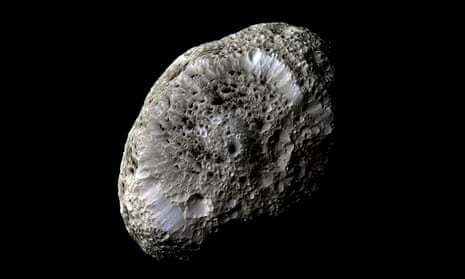It looks remarkably like a bath sponge floating in space, or perhaps a misshapen crumpet. But this strange object is one of Saturn’s outer moons, Hyperion, snapped in incredible detail by the Cassini spacecraft.
Nasa’s probe has been exploring Saturn and its moons since 2004. During its flyby, Cassini was blasted by a burst of charged particles from Hyperion, in effect experiencing a 200-volt electric shock. The zap was due to the small moon’s surface becoming electrostatically charged within Saturn’s magnetic field.
Potato-shaped Hyperion, measuring 255 by 161 miles (410 by 260km), is one of the largest bodies in the solar system known to have such an irregular form. The “spongy” appearance is due to its very low density; the moon is porous, with well-preserved craters of all shapes and sizes packed together across its surface.
Scientists believe Hyperion is mostly made from water ice, with small amounts of rock. It has a naturally reddish colour which was toned down in this image to enhance the visibility of its surface features.
Cassini was about 38,525 miles from Hyperion when the picture was taken on 26 September 2005. The image was re-released on Tuesday by the European Space Agency.
